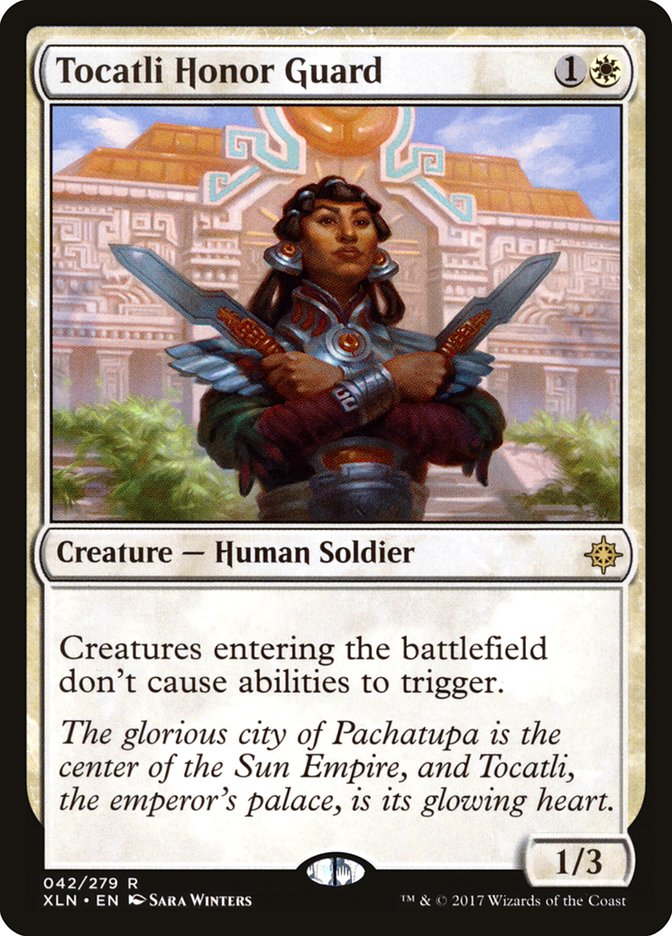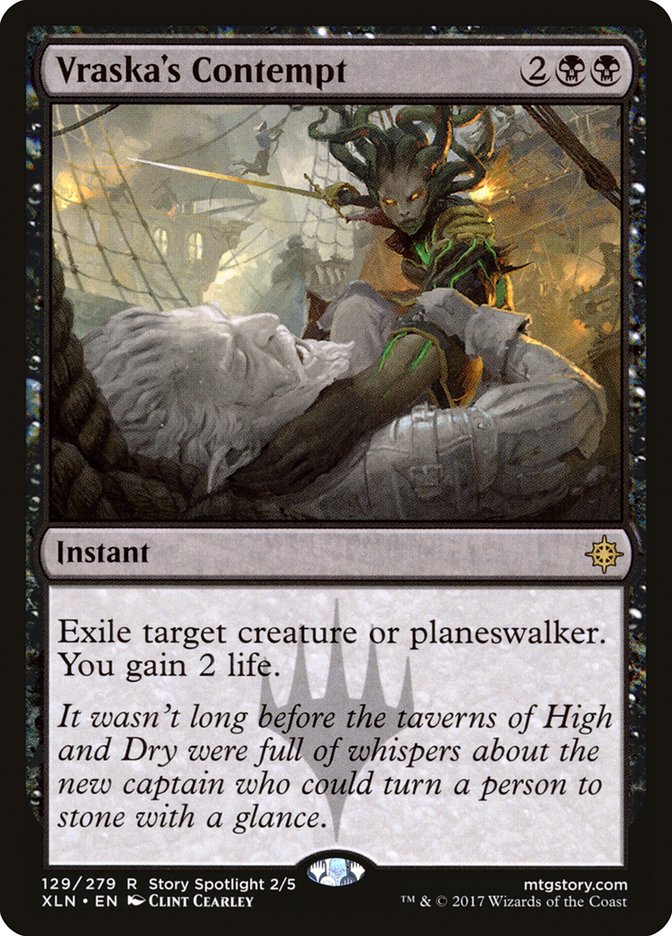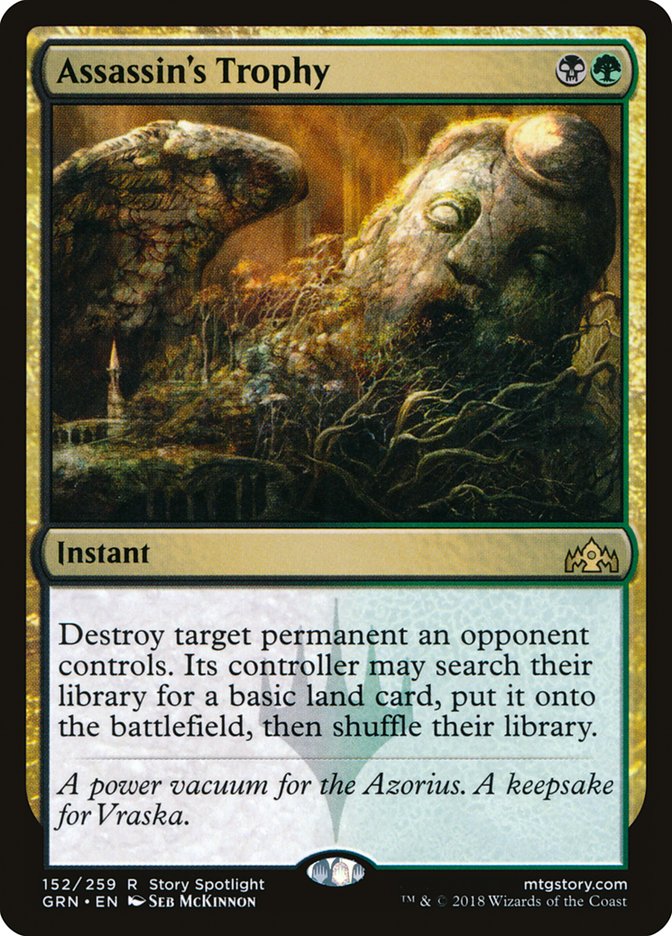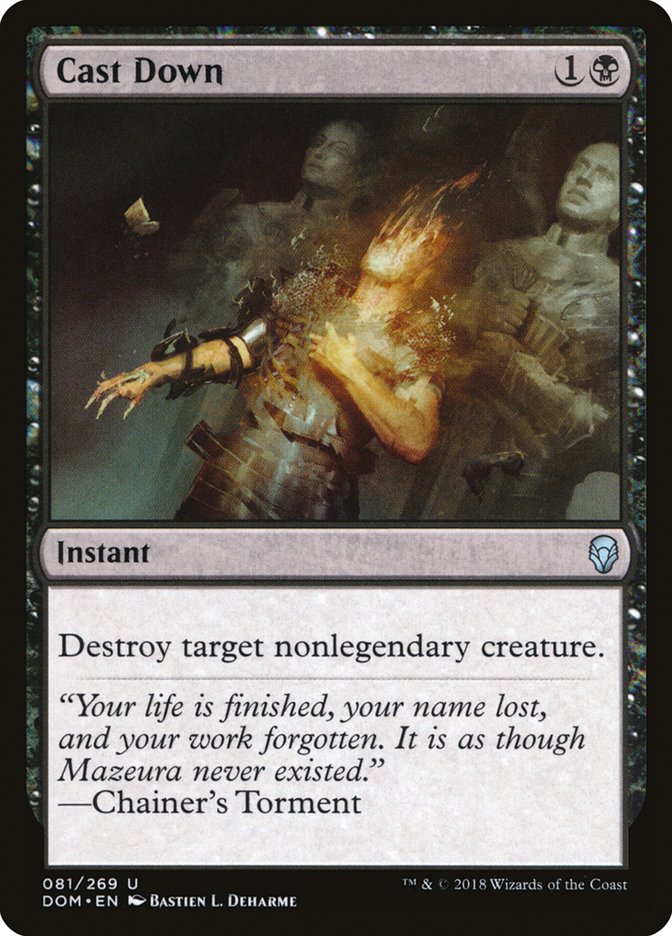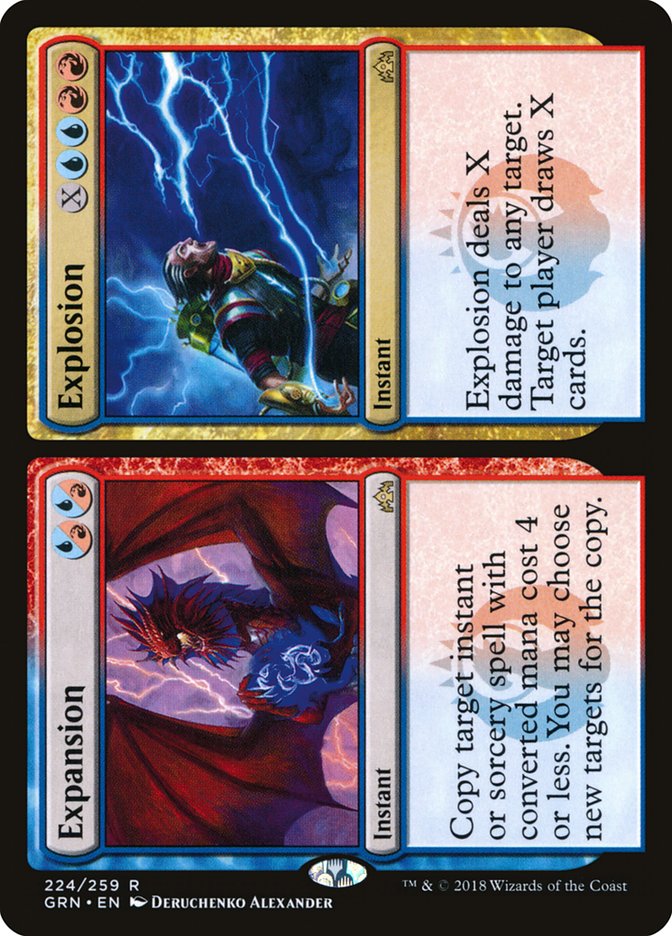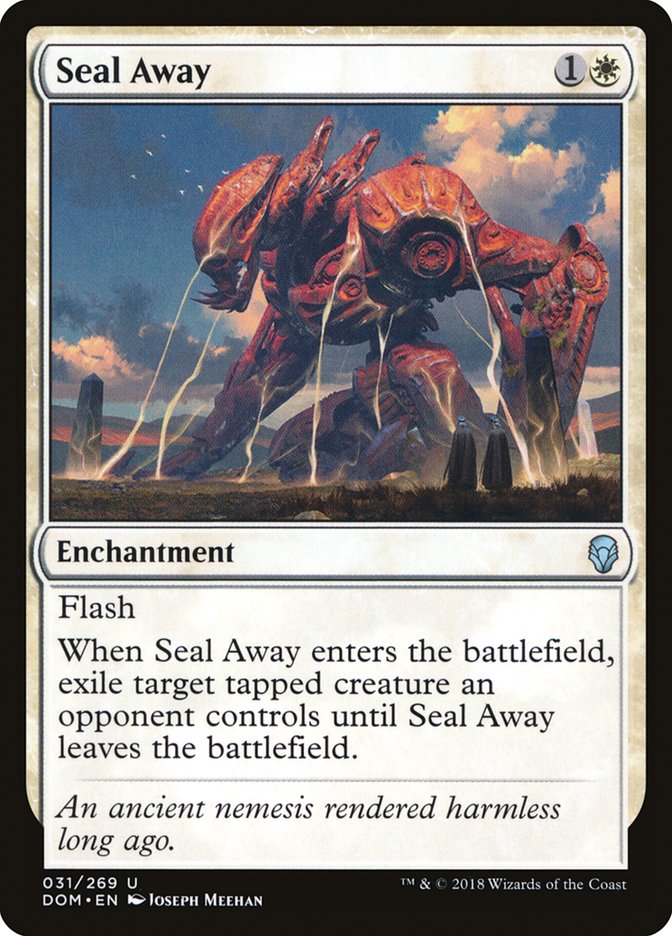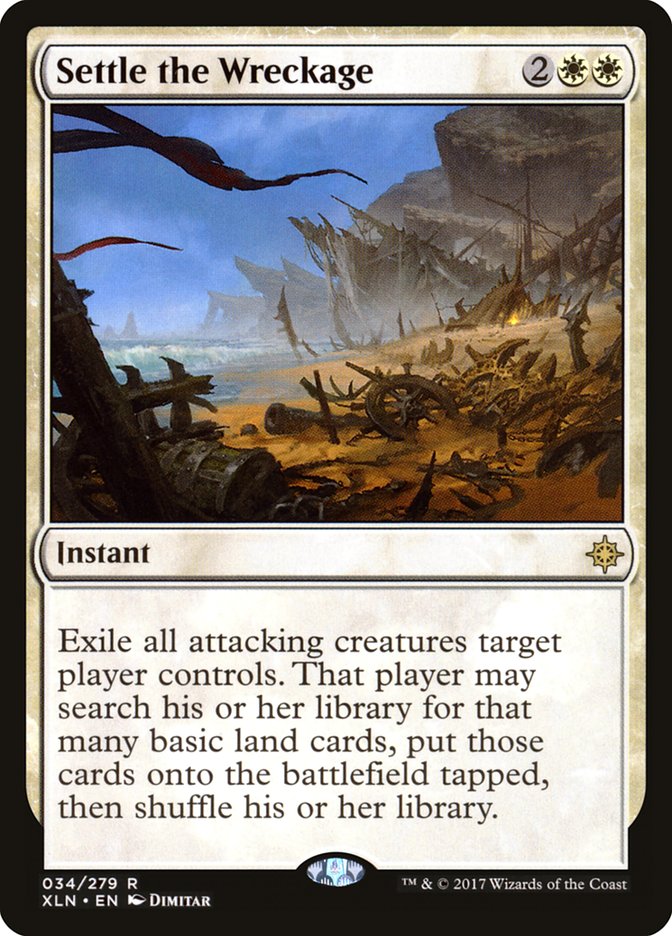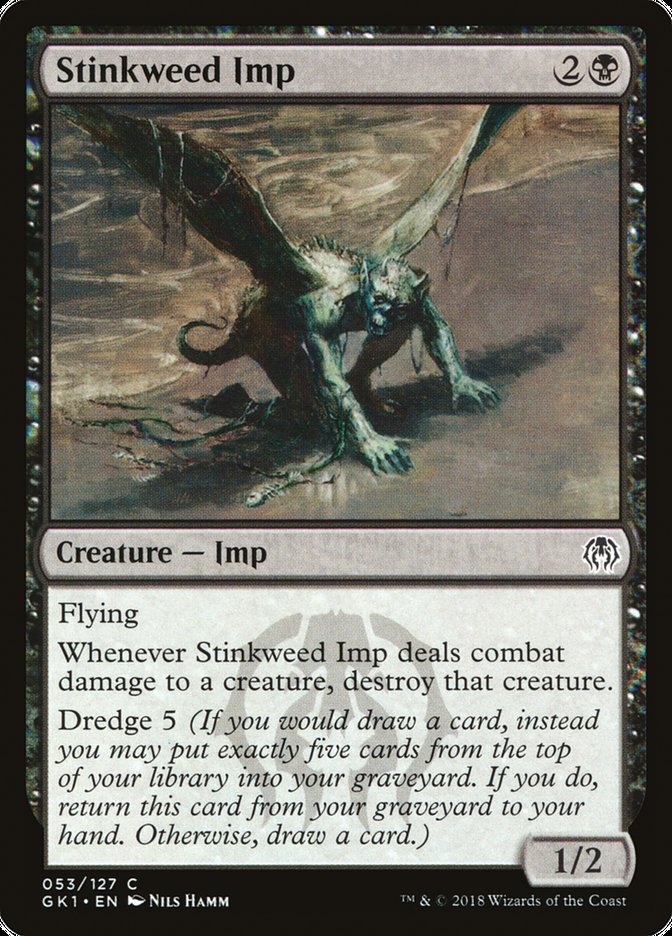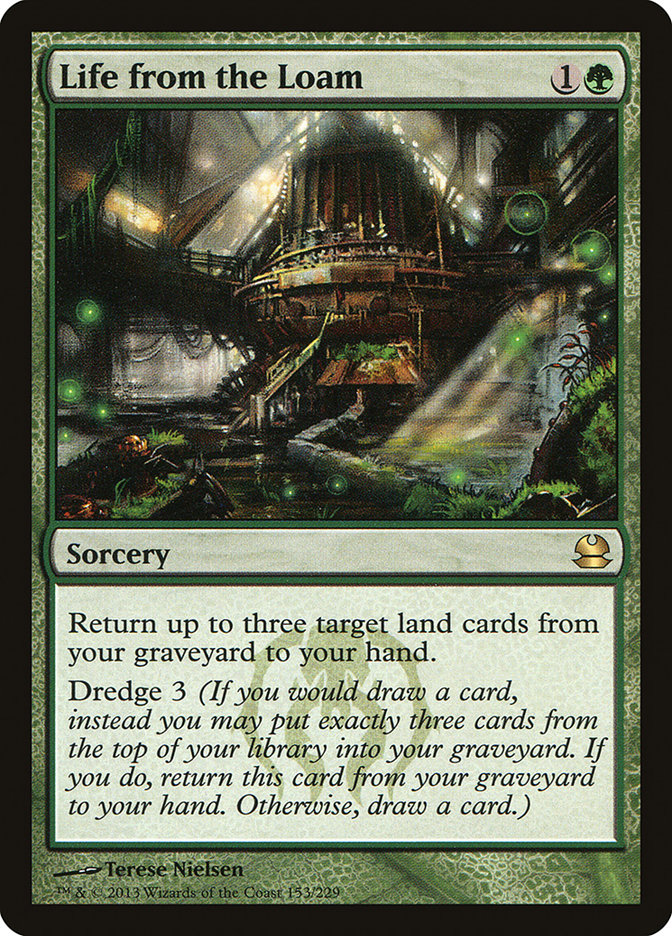One of the most frustrating aspects of tournament Magic is the difficulty of drawing hard conclusions from tournament results. We all know by now that playing ten games of a matchup, going 7-3, and declaring it favorable is a poor way to prepare for a tournament. Magic is a game with plenty of variance, and as a result, we need a large sample size in order to make sure that the results we’re seeing aren’t just statistical noise.
Large tournaments, like an SCG Tour Open or a Grand Prix, have a significant sample size, with thousands of matches being played on a given weekend. However, we as players aren’t privy to all the data these tournaments generate. Seeing what did well in Day 2 metagame breakdowns and Top 8 or Top 32 lists is relevant, but it’s a far cry from knowing what every player registered, how they performed, and the overall records of various well-known archetypes.
There’s good reason that we don’t get that data: it’s incredibly cumbersome to compile, even for our wonderful, experienced tournament staffs. It’s nonetheless frustrating that we’re left to make crucial decisions about the direction a metagame is moving in based on incomplete data.
These issues are magnified when we have multiple tournaments that are close together but produce much different results. Such was the case last weekend when we saw two Standard Grand Prix as well as the second Modern Open since the return of Dredge two weekends ago in Dallas-Fort Worth.
First, let’s establish some facts:
- In Grand Prix Lille, the story of the tournament was Golgari Midrange. Already a well-established archetype in the online metagame, Golgari thoroughly dominated the field, taking almost 40% of the slots in Day 2 as well as multiple in the Top 8. Although both Golgari pilots fell in the semifinals, it was certainly the best-performing deck in the tournament, with eleven more copies of the deck appearing in the 9th through 37th-place decklists. (An odd number at first glance, but wisely chosen, since it represents every deck with a record of 11-3-1 or better.)
- On my side of the Atlantic, Grand Prix New Jersey told a different story. Golgari was still likely the most popular deck in Day 2, as evidenced by the metagame breakdown of those who were 6-1-1 or better after Day 1, though not nearly as prominent as in Europe. At the end of the tournament, zero copies of the deck made the elimination rounds and only five found their way into the Top 33, a data set that misses one player who went 11-3-1 (I was able to independently confirm that Tyler Nightingale, who finished 33rd, played Jeskai Control), so not exactly matching that of GP Lille but I’m calling close enough.
- A similar dichotomy exists between last weekend’s Open in Charlotte and the previous one in Dallas-Fort Worth. Dredge was dominant in DFW, taking ten out of 65, or 15.4%, of the slots in Day 2, with seven of those players making the Top 32 and two more in the Top 4. Like Golgari in Lille, it was the story of the tournament, even though it fell short of a trophy.
- A week later, and the metagame came prepared. Dredge, while one of the more popular archetypes with six representatives on Day 2, was far below its metagame share the week before, falling ten percentage points to 5.4. It also failed to make the Top 8, placing a mere three players in the Top 32. In a week Dredge went from dominant to just another face in the crowd, and when it comes to Modern that’s a pretty large crowd.
So how can we take the disparate results of these tournaments and form them into a cohesive whole about the direction of Magic’s two most popular formats? There’s no exact science. You have to rely on your intuition while looking at multiple events in concert to see if a cohesive picture of what happened emerges. Let’s get to it:
Standard: Jadelight Ranger VS Tocatli Honor Guard…Fight!
Going through the top decks from Grand Prix New Jersey, it’s clear that many players looked to Tocatli Honor Guard to combat Golgari. Of the Top 32 decks, fourteen contained the card, with a total of 51 copies among them, meaning nearly all of them were packing the full playset in their list. More than just a hate card, most of these Tocatli Honor Guards made their way into maindecks, 31 to be exact.
Compare this to Grand Prix Lille, where in the Top 37 lists there were only seventeen copies of the card spread among five decks, and only seven copies in maindecks. There were three times as many copies of the hate bear in a slightly smaller sample in New Jersey, which helps explain the disparity in Golgari between the two tournaments.
Typically, I’d say relying on a card like Tocatli Honor Guard to defeat Golgari is a fool’s errand. It’s a card you need to draw early to have a significant impact, since that’s when Golgari pilots are casting their explore creatures, and it’s vulnerable to most removal, so Golgari can simply take the time to answer it and then continue with its plan.
However, the reality of Standard makes the two-drop more powerful than typical hate cards. The fact that it has widespread application in the format makes it easy to play in the maindeck. Against red decks, it stops Viashino Pyromancer and Goblin Chainwhirler while serving as a solid early blocker. It stops Cracking Drake from drawing a card and Trostani Discordant from making any tokens. It’s only a blank against control decks (note that a control deck just so happened to win the Grand Prix where Tocatli Honor Guard was heavily represented), so Golgari decks are going to be put to the test more often than they otherwise would.
Also, most Golgari lists aren’t playing a lot of cheap removal to answer it on curve. If they have to wait until Turn 4 to answer it with a Vraska’s Contempt, they’ve lost a huge amount of tempo and a powerful removal spell that they may need to answer a Rekindling Phoenix or Lyra Dawnbringer. If they answer on Turn 2 it’ll often be with Assassin’s Trophy, another significant tempo loss. Only Cast Down answers it cleanly, and that card falls short against many of the threats in the metagame, from Adanto Vanguard and History of Benalia to Aurelia, Exemplar of Justice and Arclight Phoenix.
In theory, a midrange deck answering a 1/3 on Turn 2 is simple, but in the context of current Standard it’s much more complicated. Golgari decks want to use the early turns to develop their battlefield and ensure they make their land drops, hence the emphasis on explore creatures. This plan gives them the ability to play offense or defense as they back up those creatures with versatile removal, powerful threats, and Find. Adjusting to answer Tocatli Honor Guard requires moving away from that early-game plan, which makes the entire deck less potent.
Moving away from the explore creatures would require making the deck much weaker in control matchups where Tocatli Honor Guard isn’t a threat but the card advantage makes it much easier to play through Deafening Clarion when the games are about attrition or ensuring that your Carnage Tyrant lands on time to end the game quickly. For an archetype that has a huge variation from build to build, there isn’t much if any room to maneuver Golgari away from creatures with enters-the-battlefield abilities.
So does this mean the metagame is necessarily going to move away from Golgari and towards white decks? Not necessarily. Look at the two tournaments in aggregate. Among the 70 decks we know, nineteen contained Tocatli Honor Guard while eighteen were Golgari Midrange, a near-even split. I’m not ready to say that the New Jersey metagame was ahead of that in Lille since they were on the same weekend, merely that the tournaments played out differently and that the tools are available to combat Golgari.
Given the popularity of Golgari online, I wouldn’t be surprised to see a move toward the New Jersey metagame in the short term, but the aggregate data don’t suggest that the white decks are enough better than Golgari to push it out of the format entirely. We’ve grown accustomed to Standard formats that reach a steady state rather quickly – that is to say, formats that are “solved.” The best deck or decks are found and tuned and from there it’s simply a matter of tuning to beat the mirror week to week as new tech is discovered.
But for years Standard was a format defined by its dynamism. Decks were on top for a week or two only for the metagame to adapt and push them out, and later on they would come back periodically as metagame conditions became favorable. That’s where I think we’re going with this Standard format, which is quite exciting because it means Standard won’t be stale in a month and the upcoming Pro Tour, despite being well after release, will be no less interesting as a result.
But in order to retain that dynamism, there has to be a way to capitalize on these Tocatli Honor Guard decks. For me, that answer comes from Eli Kassis’s winning list in New Jersey:
Planeswalkers (4)
Lands (27)
Spells (29)

Jeskai Control had fifteen copies in our 70-deck data set, barely behind Golgari Midrange and Tocatli Honor Guard. It has the power to compete, it loves the fact that so many players are casting a card that is effectively Maritime Guard against it so long as you eschew Crackling Drake, and it would also love for Golgari Midrange to move away from explore creatures to mitigate the damage Tocatli Honor Guard does to it.
Adanto Vanguard and Rekindling Phoenix have previously been very problematic for Jeskai Control, but the move to Seal Away and Settle the Wreckage helps a lot there. The white decks still have plenty of diverse threats and you can easily be stuck with the wrong one at the wrong time, but when a control deck comes with the removal to answer any given threat and the power of Teferi, Hero of Dominaria and Expansion, it’s going to be in good shape.
So after a deep dive into the results, it looks like Golgari Midrange, various aggressively slanted white decks, and Jeskai Control are the pillars of the format. A rock-paper-scissors dynamic between these three would be reminiscent of Return to Ravnica–Theros Standard which was ruled by Mono-Black Devotion, Mono-Blue Devotion, and Sphinx’s Revelation-based Control decks.
However, where that format was stale because the three top decks barely changed from week to week or even month to month, we’re seeing the top decks in this Standard change rapidly. The white removal was nonexistent in Jeskai Control two weeks ago and is now commonplace. Golgari Midrange decks have moved away from Vraska, Relic Seeker and toward Carnage Tyrant while incorporating Midnight Reaper. There’s no best build of any of these decks that we have to find, but there will be a best build on any given weekend based on what threats and answers everyone else is playing.
This Standard format is emblematic of the duality of metagaming. Not only do you need to make a good deck choice, you need to tune your deck appropriately. A Jeskai deck with a bunch of Justice Strikes and red removal wouldn’t have done well in a New Jersey field full of Adanto Vanguards, but one with Seal Away and Settle the Wreckage to handle sticky threats, supported by Deafening Clarion to cover threats that go wide, won the tournament.
As for what’s going to happen next week, I expect Golgari decks to incorporate more Thrashing Brontodons as a threat that answers Seal Away and powerful cards like The Immortal Sun and isn’t affected by Tocatli Honor Guard while white decks look to tune more against Jeskai Control than Golgari. The proliferation of Tocatli Honor Guard may make players skittish of playing Golgari Midrange but that means the payoff for finding the right build of the deck is highest. The best place to be is on the deck with the smallest target.
Modern: To Dredge or Not to Dredge?
Modern is a bit more straightforward than Standard because the two Opens were on separate weekends. The players in Charlotte saw Dredge’s dominance in Dallas and reacted appropriately. Almost every list in the Top 32 has either four or more hate cards for the Dredge matchup between maindeck and sideboard, or the ability to go over the top of Dredge and win without hate – and many of them have both.
Dredge may not have been popular, but its fingerprints are all over the Charlotte Open. And with the massive target on its back, it’s not unreasonable to assume that many players were put off of the deck for Charlotte. After a week off, Caleb Scherer returned to his trusty Storm deck and dominated the Swiss rounds. It’s only a mad man who would run a linear deck straight into what was sure to be a well-prepared metagame, right?
But beneath the surface there is a more interesting narrative than “Everyone had graveyard hate so Dredge lost, obv.”
First, consider the Day 2 metagame breakdown. If you remove Dredge from that list or replace it with Hollow One, that breakdown looks like it could come from any Modern Open over the last four months. With the exception of the increase in Tron, those are all decks that mostly rely on hate cards to defeat Dredge, a tactic that I denounced as inadequate in my article last week.
Even decks that have historically poor Dredge matchups regardless of hate, such as Jund and Azorius Control, showed up in high numbers. It would appear that most players thought their hate would be sufficient or relied on the threat of hate suppressing Dredge’s numbers. Despite my warning last week, it looks like this tactic worked.
Taking the tactical approach of overloading on hate, as opposed to switching to a better strategy, is common in Modern where players either don’t have access to more than one deck or are overly attached to their mediocre, mismatched pile of foil Jeskai cards. Such is the nature of Modern, so a stubborn resistance to change is to be expected. It’s going to take longer than a week for the impact of Dredge to shape the Modern metagame.
If players continue to overload on graveyard hate, Dredge will diminish for a while and other decks will rise to take advantage of underprepared sideboards. The diversity of Modern is a natural check on the tactic of overloading on hate because it naturally stretches your sideboard space. There’s only so much you can do to incorporate more hate against Dredge that’s applicable in other matchups, cards like Anger of the Gods or Grafdigger’s Cage, before you put yourself at a distinct disadvantage.
Maybe we’ll find ourselves in a cycle where Dredge pops up when graveyard hate is low and die down when graveyard hate is high, but given that Dredge was still a reasonably performing deck in one of the most hateful metagames imaginable, I think such a cycle is unsustainable. Ultimately more players will move to decks that are naturally good against Dredge without having to overload on hate.
Creatures (14)
Lands (27)
Spells (19)

Creatures (7)
Lands (28)
Spells (25)

In fact, one such deck, Amulet Titan, took both finals spots in the Open. I noted it as a good option against Dredge last week, but I thought it might fall prey to faster combo decks like Infect. However, if everyone sticks to their Jund, Control, and Tron decks, Primeval Titan is incredibly well-positioned. It even managed to take third in the hands of Becky Adlman and her TitanShift deck. Decks like Amulet Titan and TitanShift that don’t need as many sideboard cards for Dredge gain a significant edge on decks that do, essentially gaining four or five sideboard slots. It may take a while, but Modern will eventually get to a place where Dredge’s naturally good matchups are suppressed while its bad matchups rise. The deck is too powerful to be completely hated out.
But given how slow that process projects to be, I expect Primeval Titan decks to be quite good in the coming weeks. Amulet Titan is a complicated deck to pilot, but the reward is there. If you want to go a level ahead of Primeval Titan, I think Infect is a good place to be, with a strong Dredge matchup and a bad matchup against the removal-heavy strategies that Primeval Titan decks and Dredge prey on.
***
As you can see from the above discussion, metagaming, especially on limited data, is an open-ended problem. And while it’s frustrating to be unsure of what to do, the challenge in figuring it out is part of what separates tournament Magic from casual play. Deckbuilding, high-level strategy, and evocative artwork and flavor are all commonly cited ways that players engage with Magic and enjoy it, and while those remain when you move into the competitive realm, you add the challenges of metagaming and then tuning for that metagame. There’s a reason players complain when formats are stale, and it’s because they lose that challenge.
Sure, maybe more data would make metagaming easier, or more exact, but working with and extrapolating from unknown information is central to Magic, so I try to look at these problems as a chance to hone my intuition. Every problem in Magic is a chance to improve, and the more such chances you take, the better you’ll become.


